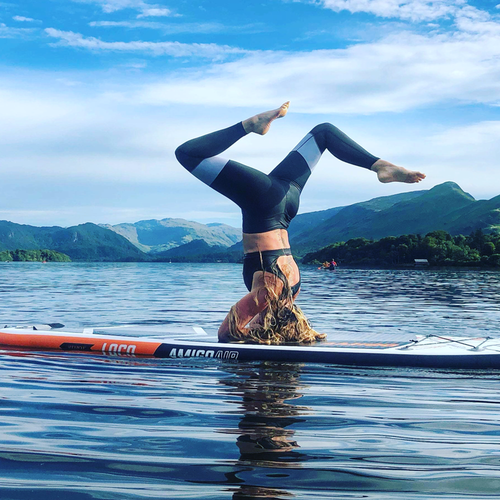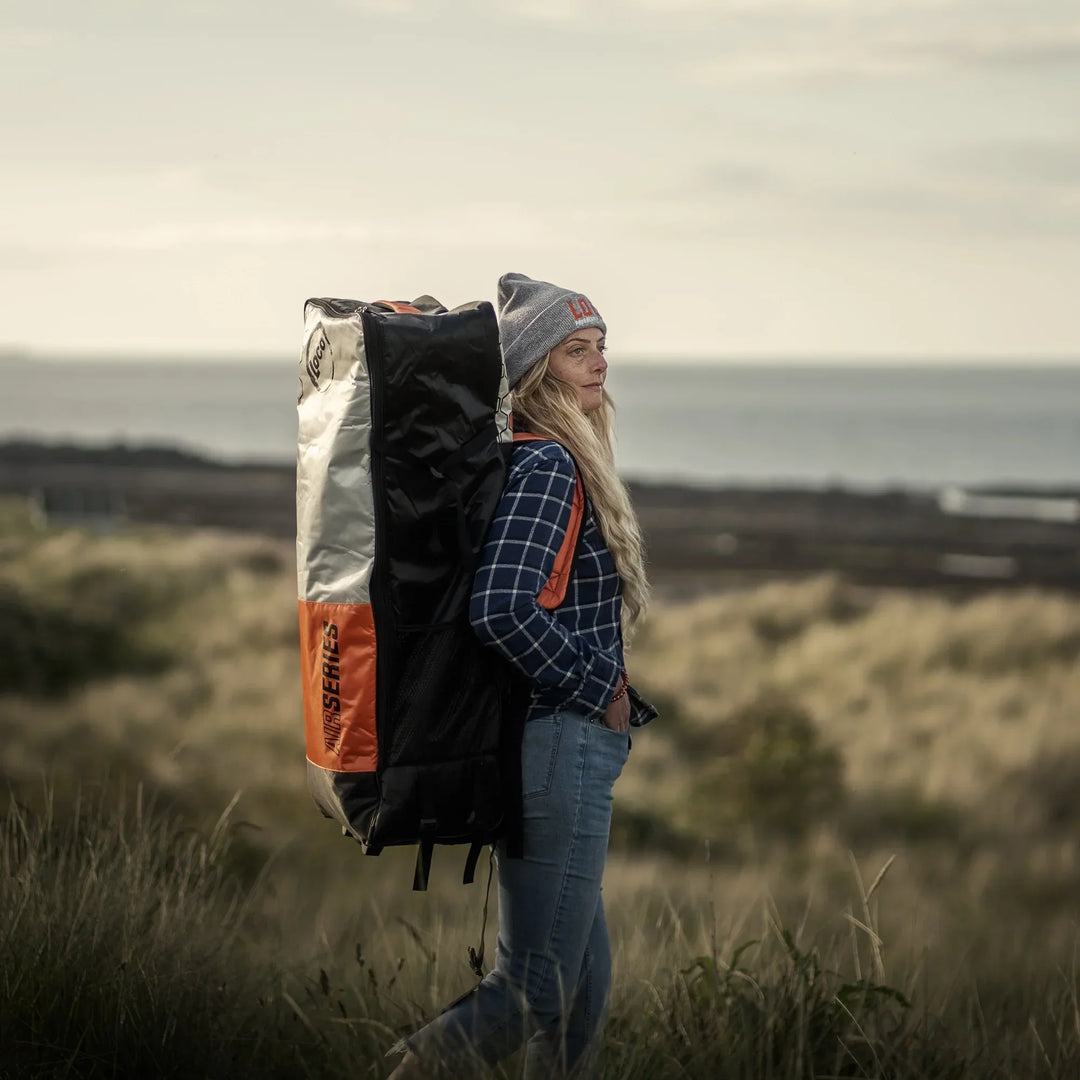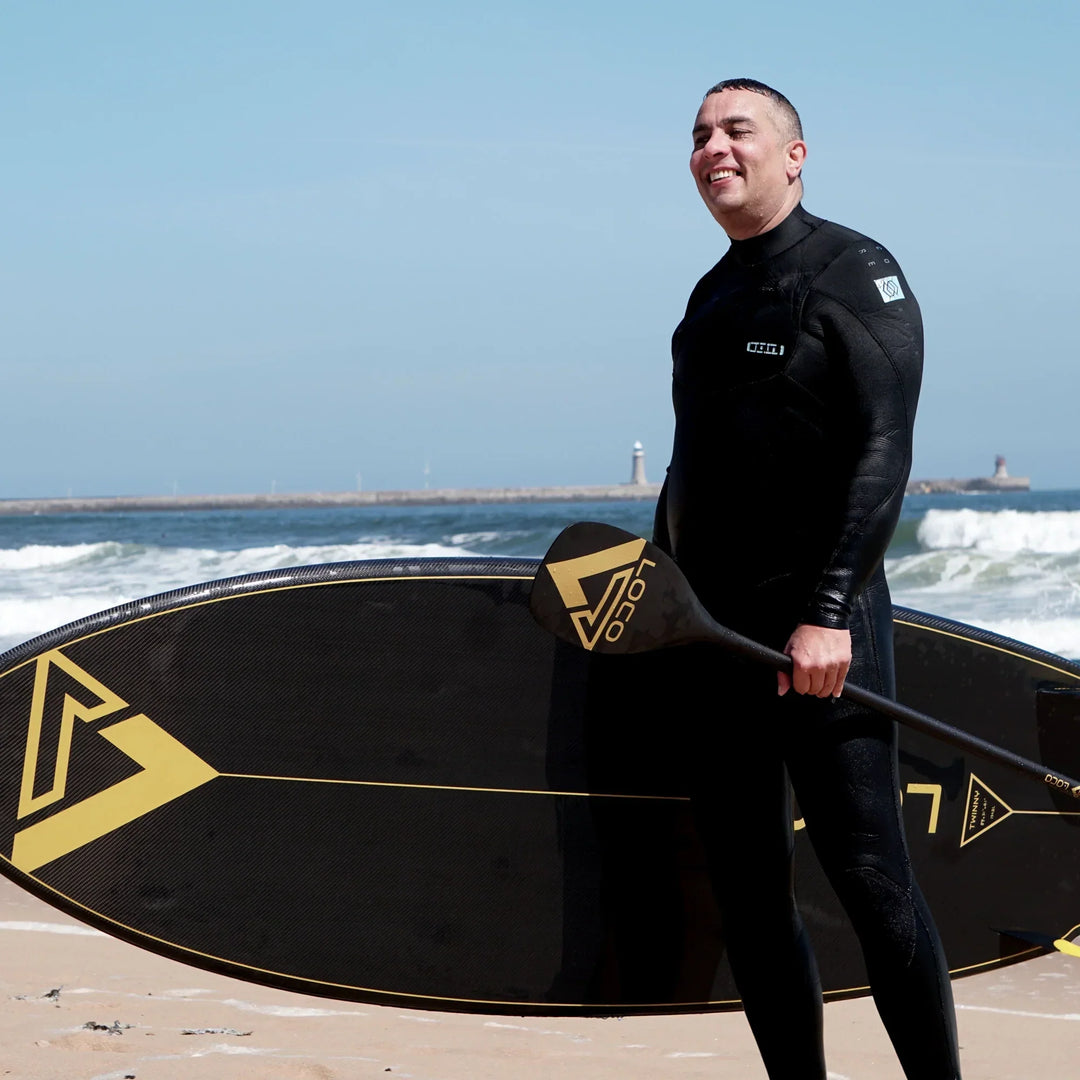Mastering SUP Balance: Top 10 Tips for Beginners

Introduction
Picture this: the sun is shining, the water is calm, and you’re standing triumphantly on your paddle board—until, whoops, you’re not. For many beginners, balancing on a stand-up paddle board (SUP) can feel like walking a tightrope over a lake. Don’t worry; we’ve got you covered. With a little guidance and some practice, you’ll go from wobbly first-timer to balance master in no time. Let’s dive in with Loco’s top tips for finding your footing.
Why Balance Is Key in Stand-Up Paddleboarding
Balance is the foundation of SUP, literally. Without it, you’re likely to spend more time swimming than paddling. Whether you’re out for a leisurely paddle or trying your hand at SUP yoga, mastering balance ensures you get the most out of your experience.
Maintaining balance also helps you build core strength, which is one of the underrated benefits of paddleboarding. As you steady yourself on the board, your abs, obliques, and lower back muscles are working overtime. The result? A fun workout that’s easier to commit to than a monotonous gym session.
10 Tips to Master SUP Balance
1. Choose the Right Board Your board makes all the difference. Wider boards (30+ inches) offer more stability, perfect for beginners. Inflatable paddle boards, like Loco’s iSUP range, are ideal for UK paddlers because they’re forgiving and easy to transport. If you’re unsure, start with a board designed for stability rather than speed. Boards with a higher volume (thickness) are also a great choice for beginners as they offer better buoyancy.
Consider features like deck padding as well. A textured, non-slip surface can make a huge difference in preventing accidental slips while you’re learning. Loco’s boards are equipped with durable EVA foam padding, which adds comfort and extra grip.
2. Start on Calm Waters Find a flat, calm body of water to practice—think quiet lakes or sheltered bays. Avoid the choppy seas of Brighton or the River Thames’ infamous currents for your first outing. Calm waters reduce the challenge of maintaining balance, allowing you to focus on your stance and paddle technique.
If you’re near popular UK paddleboarding spots like Windermere or the Norfolk Broads, seek out the quieter areas. Mornings are usually calmer with less boat traffic, offering an ideal time for beginners to practice.
3. Use a Leash and Life Jacket Safety first! A leash keeps your board within reach, and a buoyancy aid ensures you’re safe if you do take a dip. Plus, a bit of peace of mind can do wonders for your balance. Most inflatable paddle boards include a leash as standard, but investing in a quality one ensures durability.
A well-fitted buoyancy aid or personal flotation device (PFD) is essential. It’s not just about safety; knowing you’re equipped to float easily takes away the fear of falling, allowing you to focus fully on your balance.
4. Start on Your Knees Before you stand, practice paddling from a kneeling position. This helps you get used to the board’s movement without the added challenge of standing. Once you feel stable, move to a half-kneeling position (one knee up), which bridges the gap to full standing.
This technique is particularly helpful in windy conditions or when small waves create movement under the board. By mastering kneeling paddling first, you’ll develop a feel for how your paddle impacts stability.
5. Find Your Balance Point Stand with your feet shoulder-width apart and positioned on either side of the board’s handle—that’s the sweet spot for stability. Avoid standing too far forward or back, as this can cause the board to tilt.
Many SUP boards have visual markers, such as a central grip or logo, to guide your foot placement. If yours doesn’t, use a piece of tape to mark the centre of the board during practice sessions.
6. Keep Your Eyes on the Horizon Resist the urge to look down at your feet. Keeping your gaze forward helps maintain balance and avoid vertigo. Plus, you’ll get to enjoy the scenery. It’s a simple trick, but one that makes a world of difference.
Looking at a fixed point in the distance rather than tracking waves beneath your feet stabilizes your body and reduces wobbling. Over time, this habit becomes second nature.
7. Bend Your Knees Slightly Keep a slight bend in your knees and engage your core. This absorbs small movements from the water and gives you a steadier base. Avoid locking your knees, which can make you rigid and more prone to losing balance.
Engaging your core doesn’t mean tensing up; instead, focus on maintaining an active stance that’s relaxed yet controlled. Practicing squats or lunges off the board can improve this skill.
8. Use a Paddle for Stability Your paddle isn’t just for propulsion. Use it as a counterbalance by planting it in the water when you feel wobbly. It’s like having an extra leg for support. Experiment with holding the paddle horizontally at chest height for added balance when standing up.
Make sure your paddle is adjusted to the correct length—roughly 6-10 inches taller than your height—to maximize control and minimize strain.
9. Practice Falling—and Getting Back Up Yes, you read that right. Practicing how to fall safely (away from your board) and getting back on helps you overcome the fear of tumbling. Confidence is half the battle. Remember, falling is part of learning.
To get back on, position yourself beside the board, hold onto the handle or side, and kick your legs as you pull yourself onto your knees. Practicing this motion in shallow water builds muscle memory.
10. Take a Lesson There’s no shame in getting professional help. A SUP lesson can teach you proper techniques, saving you hours of trial and error. Many Loco-approved instructors offer beginner-friendly classes across the UK. Check out local clubs or watersports centres for options near you.
Common Mistakes to Avoid
While mastering balance, steer clear of these rookie errors:
- Stiff Legs: Locking your knees makes you less flexible and more prone to toppling.
- Standing Too Far Back: This lifts the nose of the board, making it unstable.
- Holding the Paddle Incorrectly: A poorly gripped paddle can throw off your balance.
- Rushing to Stand: Take your time and focus on feeling stable before attempting to stand.
Building Confidence Through Practice
Like any skill, SUP balance improves with practice. Dedicate a few hours a week to honing your technique, and you’ll notice significant improvements. Start with shorter sessions to build stamina and confidence. You might even be ready to try SUP yoga or surf-style paddling before summer rolls around.
Another tip? Bring a friend or join a group session. Having company not only makes the experience more enjoyable but also gives you extra support and encouragement.
Conclusion Stand-up paddleboarding is as much about the journey as the destination. Embrace the learning process, and don’t worry about a few splashes along the way. With these tips and the right equipment from Loco, you’ll soon be gliding across the water with the grace of a pro. Start small, stay consistent, and remember to have fun. The water is waiting!
Keywords: paddle board, stand-up paddle board




